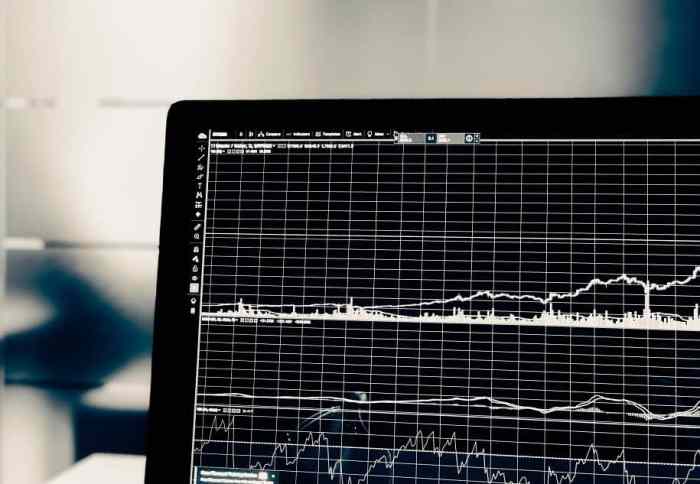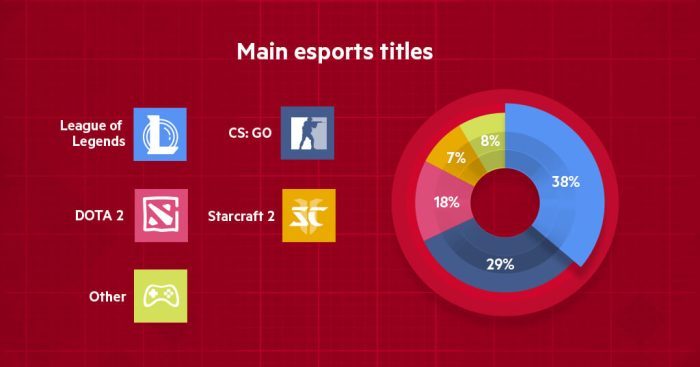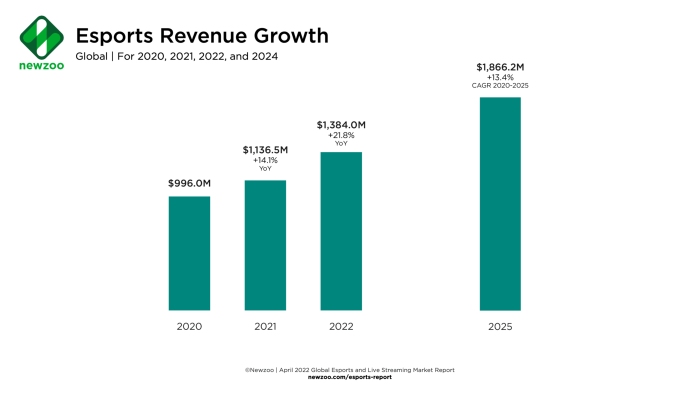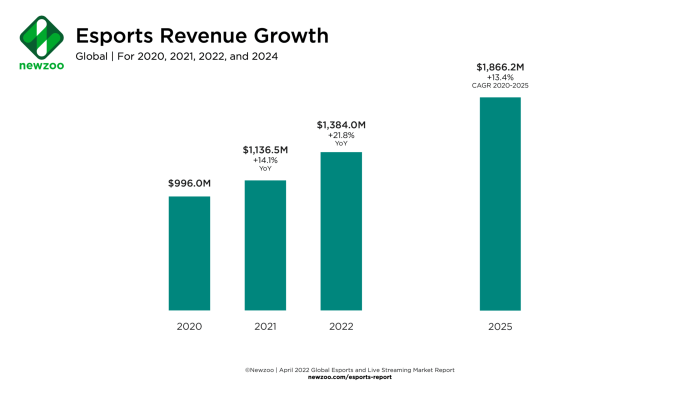Esports Data Analytics is totally blowing up! It’s no longer just about who has the sickest reflexes; now, teams are using data to completely dominate the competition. Think advanced stats, predictive modeling, and seriously smart marketing strategies – all powered by analyzing massive amounts of game data. This deep dive explores how teams and organizations are leveraging data to gain a competitive edge, from player recruitment to fan engagement.
We’ll cover everything from the history of esports data to the cutting-edge AI and machine learning techniques shaping the future. Get ready to level up your understanding of how data is changing the game (literally!).
The Evolving Landscape of Esports Data

Esports data analytics has exploded in recent years, transforming from a niche hobby to a crucial component of professional team strategies and broadcasting experiences. This evolution has been fueled by both technological advancements and the increasing popularity and professionalism of esports itself. Understanding this landscape is key to appreciating the current state and future potential of esports data analysis.
Historical Progression of Esports Data Usage
Early esports data collection was rudimentary, often relying on manual tracking of match results and player performances. Think spreadsheets and sticky notes! The introduction of game APIs (Application Programming Interfaces) in the late 2000s and early 2010s marked a significant turning point. These APIs allowed for automated data extraction directly from the games themselves, leading to more comprehensive and accurate datasets.
Simultaneously, improvements in data storage and processing power enabled the analysis of larger and more complex datasets. The rise of dedicated esports platforms and streaming services further enhanced data collection capabilities, integrating real-time data feeds and advanced analytics tools. Today, we see the use of machine learning and AI for predictive modeling, player scouting, and strategic optimization.
Major Sources of Esports Data
Currently, esports data comes from a variety of sources. Game APIs provide detailed in-game statistics, offering a granular view of player actions and match events. Tournament platforms like ESL and BLAST often provide comprehensive match data, including team compositions, win rates, and overall tournament results. Streaming services such as Twitch and YouTube Gaming, while not primarily data sources, provide valuable information on audience engagement metrics, viewership numbers, and peak concurrent viewers.
Finally, many teams and organizations collect their own proprietary data through internal tracking systems and scouting networks.
Data Collection Methods: Professional Teams vs. Independent Analysts
Professional esports teams typically employ dedicated data analysts and utilize sophisticated custom-built tools for data collection and analysis. They have access to internal data streams, often including private APIs and player performance tracking systems unavailable to the public. This allows for highly tailored analyses focused on optimizing team strategies and identifying individual player strengths and weaknesses. Independent analysts, on the other hand, primarily rely on publicly available data from game APIs, tournament platforms, and streaming services.
Their analysis is often more general, focusing on broader trends and patterns across the entire esports ecosystem. While less granular, their insights can still provide valuable context and identify emerging trends.
Types of Esports Data and Their Sources
| Data Type | Description | Sources | Example |
|---|---|---|---|
| Player Statistics | Individual player performance metrics (e.g., KDA, damage dealt, accuracy). | Game APIs, Tournament Platforms | Kills, Deaths, Assists (KDA) in a League of Legends match. |
| Team Performance | Team-level metrics (e.g., win rate, map control, average game duration). | Tournament Platforms, Game APIs, Team Internal Data | Win percentage over the last 10 matches for a Dota 2 team. |
| Audience Engagement | Viewership metrics (e.g., peak viewers, average viewers, chat activity). | Streaming Platforms (Twitch, YouTube), Tournament Organizers | Average concurrent viewers for a Counter-Strike: Global Offensive tournament. |
| Match Events | Detailed record of in-game events (e.g., kills, objectives taken, item purchases). | Game APIs, Tournament Platforms | Timeline of objective control in a Valorant match. |
Applications of Esports Data Analytics in Team Performance

Esports data analytics has revolutionized how teams approach player development, strategy, and overall performance. By leveraging advanced metrics and sophisticated analytical techniques, organizations can gain a deep understanding of individual player strengths and weaknesses, team synergy, and ultimately, optimize their chances of success. This allows for data-driven decision-making across all aspects of team management, from recruitment to training.Advanced metrics derived from esports data provide a granular view of player skill and team synergy.
Instead of relying solely on subjective assessments or win/loss records, teams can analyze objective data points to pinpoint areas for improvement. For example, in a game like League of Legends, KDA (Kill/Death/Assist ratio) provides a basic understanding of a player’s performance, but more advanced metrics like damage per minute, vision score, and objective control rate offer a far more nuanced perspective.
Analyzing these metrics across multiple players allows for the identification of synergistic combinations, revealing which players work best together and highlighting potential weaknesses in team composition. Similarly, in a game like Counter-Strike: Global Offensive, analyzing player positioning data, kill trades, and economic efficiency can reveal critical insights into individual and team performance.
Assessing Individual Player Skill and Team Synergy
Analyzing individual player performance metrics reveals strengths and weaknesses. For instance, a high KDA but low objective control might suggest a player excels in skirmishes but needs to improve strategic decision-making. Conversely, a player with high objective control but low KDA might be excellent at setting up plays but needs to improve their personal combat skills. By comparing these metrics across the team, analysts can identify imbalances and pinpoint areas requiring attention.
Analyzing team synergy involves examining how players interact during matches. Heatmaps illustrating player positioning during team fights can reveal whether players are effectively coordinating their movements or if there are communication or coordination issues. This allows coaches to tailor their training to address specific team weaknesses.
Informing Player Recruitment Strategies and Roster Decisions
Data analysis plays a crucial role in identifying and recruiting talented players. Teams can use historical data to create player profiles, outlining desired skill sets and performance metrics. This allows scouts to focus on players who statistically fit the team’s needs and have a high probability of success. Furthermore, analyzing player performance in different roles or team compositions can help determine optimal roster configurations.
For example, data might reveal that a specific player excels in a support role when paired with a particular aggressive carry player, informing roster construction and strategic planning.
Optimizing Team Training Regimes and Developing Effective Game Strategies
Data analytics is not just about assessing current performance; it’s also about improving future performance. By analyzing past matches, teams can identify recurring patterns in their successes and failures. This allows coaches to develop targeted training regimes focused on specific skill improvements or strategic adjustments. For instance, if data reveals a team consistently loses control of crucial objectives, the training regimen can emphasize map awareness and objective control strategies.
Furthermore, data analysis can inform the development of effective game strategies by revealing opponent weaknesses and exploiting them. Analyzing opponent play styles and performance trends allows for the creation of counter-strategies and the identification of potential vulnerabilities.
Ethical Considerations Surrounding the Use of Data to Evaluate and Manage Player Performance
The use of data to evaluate player performance raises important ethical considerations. It’s crucial to ensure that data is used fairly and transparently. Over-reliance on data without considering other factors, such as player motivation or mental health, could lead to unfair evaluations or detrimental pressure on players. Teams need to establish clear guidelines and procedures for data collection and usage to ensure player privacy and protect against potential biases.
Open communication between coaches, analysts, and players is essential to build trust and ensure that data is used constructively rather than punitively. The potential for algorithmic bias needs careful consideration and mitigation. Ensuring fairness and transparency in the use of data is crucial to maintaining a healthy and ethical esports environment.
The Future of Esports Data Analytics

Esports data analytics is rapidly evolving, driven by technological advancements and the increasing sophistication of the competitive gaming landscape. The future promises even more insightful applications, impacting everything from player performance to fan engagement. We’re moving beyond simple statistics to a more predictive and personalized approach to understanding and optimizing the esports ecosystem.
Emerging Trends and Technologies, Esports Data Analytics
Several key trends will shape the future of esports data analytics. The integration of real-time data streams from multiple sources, including in-game events, player peripherals, and social media sentiment, will create a holistic view of game performance and audience reaction. Advancements in cloud computing will enable the processing and analysis of massive datasets in real-time, facilitating faster insights and more effective decision-making.
The rise of edge computing will allow for on-site data processing, minimizing latency and enhancing the responsiveness of analytical tools. Finally, the adoption of advanced visualization techniques, such as augmented reality and virtual reality, will allow for more immersive and intuitive data exploration.
Impact of Artificial Intelligence and Machine Learning
AI and machine learning are poised to revolutionize esports data analytics. AI-powered predictive models can forecast player performance, identify optimal team compositions, and even suggest strategic adjustments during gameplay. Machine learning algorithms can analyze vast amounts of data to identify subtle patterns and correlations that might be missed by human analysts, leading to more accurate and nuanced insights.
For example, an AI could analyze thousands of hours of professional Dota 2 gameplay to identify previously unknown strategies or predict the success rate of specific hero combinations. This predictive capability can significantly enhance coaching strategies and player training.
New Data Sources and Analytical Methods
The future of esports data analytics will be characterized by the development of new data sources and analytical methods. Biometric data, such as heart rate and galvanic skin response, can provide valuable insights into player stress levels and cognitive performance. Eye-tracking technology can reveal players’ attentional focus and decision-making processes. Furthermore, the increasing use of sensor-based technology in esports venues will allow for the collection of environmental data, such as ambient noise levels and temperature, which can influence player performance.
Sophisticated natural language processing techniques will allow for the analysis of player communications and fan interactions on social media, providing a deeper understanding of team dynamics and community sentiment. Advanced statistical modeling techniques, such as Bayesian networks and causal inference, will enable a more robust and nuanced analysis of complex relationships between data points.
Hypothetical Future Scenario: Integrated Data Analytics
Imagine a future where esports data analytics is seamlessly integrated into the game itself. During a live broadcast of a League of Legends match, viewers’ screens display real-time heatmaps showing player positioning and engagement rates, dynamically updating as the match progresses. A small, unobtrusive overlay on the screen shows each player’s current in-game KDA (Kills, Deaths, Assists), alongside predicted future performance based on AI analysis of their current playstyle and opponent tendencies.
For players, in-game HUDs might suggest optimal item builds or strategic maneuvers based on real-time data analysis of the game state and opponent strategies. This integrated approach would not only enhance the viewing experience for fans but also provide players with a significant strategic advantage, transforming the competitive landscape of esports.
Top FAQs: Esports Data Analytics
What types of jobs use esports data analytics?
Data analysts, team managers, coaches, marketing specialists, and even game developers all use esports data analytics in different ways.
How accurate are esports predictive models?
Accuracy varies widely depending on the model’s complexity, the data used, and the game itself. No model is perfect, but they can still offer valuable insights.
What are some ethical concerns surrounding esports data analytics?
Concerns include player privacy, potential bias in algorithms, and the pressure put on players due to constant performance monitoring.
Where can I learn more about esports data analytics?
Online courses, university programs, and industry conferences are great resources. Many online communities also discuss the latest trends and techniques.
